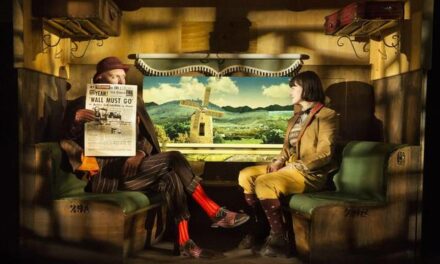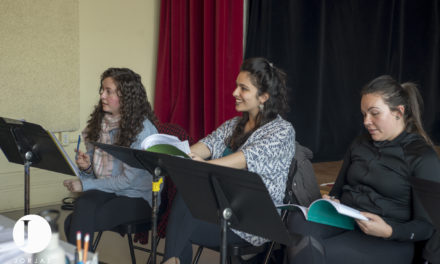When the circus comes to town in most parts of the world these days, you won’t see elephants, tigers, or clowns with big red noses.
Since Canada’s animal-less Cirque du Soleil took to the road in 1984 with its character-driven shows and nonstop live music, we have seen the emergence of what has become known as contemporary circus. Montreal-based Cirque is now the biggest theatrical producer in the world.
Audiences in Japan have packed out several Cirque tours, and have flocked to similar performances by groups from elsewhere in Canada, as well as France and Vietnam. During summer holidays many smaller performance troupes from home and abroad also run scaled-down circus-type shows, festivals, and workshops for students.
Yet despite all this, not to mention the country’s thriving music, dance and theater scenes, Japan has almost no presence of its own in this form of performance art.
Asked to account for its absence, Yosuke Meguro, the founder of Nagamekurashitsu (Living Deep In Thought), which, since its inception in 2008, has become foremost among the nation’s very few circus companies, tells The Japan Times what sets contemporary circuses apart.
“From its beginnings in France in the 1970s, the genre developed as a mixture of traditional circus skills, theater and dance, and aesthetic visual effects,” he says. “However, it’s distinct from theater because it uses midair space as well as a stage.”
During a break in rehearsals from his latest work, Ura No Ura Ha (The Other Side Of The Other Side), which runs from August 17 to 20 in Tokyo, the 33-year-old performer and director is joined by the company’s producer, Yuko Okumura, who adds that while “many young Japanese dream about being circus stars, it’s still a very minor culture here, so there’s no systematic environment in which to nurture them, and there are not enough opportunities and places.”
In contrast, she says, “While there are national circus schools in France and Canada, this country has just one nonprofit center called the Souri International Circus School in Gunma Prefecture, and I believe even that is struggling to survive. Consequently, talented Japanese go and study circus skills abroad. Then they stay there, where the work is, rather than sharing their knowledge back home.”
Adding to that, Meguro says the challenges facing rookie circus artists in Japan can be formidable.
“Unlike dancers, we need the proper equipment and space just to rehearse,” he says. “We also need enough time to prepare properly, because what we do can be dangerous. As of yet, though, there is no suitable environment here.”
Meguro’s words paint a bleak picture of the prospects for a contemporary circus in this country, but he remains upbeat.
“Despite these barriers, we have to figure out a way to create and perform such works in Japan, and that quest has actually led me to some unexpected encounters,” he says. “I want to create an original, home-grown Japanese-style circus with a wide range of collaborators from acrobats to tightrope walkers and jazz musicians. From among Japan’s many great gymnasts, top-class circus artists may also emerge.”
The audience is there, so it might be time for the contemporary circus to finally join the ranks of Japan’s other performing arts. After all, with hip-hop dance an option on the school curriculum since 2012, it’s not inconceivable that children could be offered the chance to gain juggling or tightrope skills as well. It sure beats staring at your smartphone all day.
The Other Side Of The Other Side runs August 17-20 at Theatre Tram in Setagaya Ward, Tokyo (start times vary, ¥4,000 in advance with discounts for children). For more information, visit bit.ly/2vh25Oq.
This article appeared in TheJapan Times, on August 8, 2018, and has been reposted with permission.
This post was written by the author in their personal capacity.The opinions expressed in this article are the author’s own and do not reflect the view of The Theatre Times, their staff or collaborators.
This post was written by Nobuko Tanaka.
The views expressed here belong to the author and do not necessarily reflect our views and opinions.


















